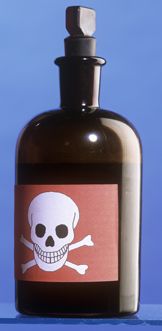 |
ACONITINEA poisoner’s potion of choice.
Paul May
Also available: HTML version and one in Spanish.
|
 |
ACONITINEA poisoner’s potion of choice.
Paul May
Also available: HTML version and one in Spanish.
|
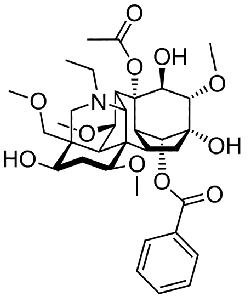
Aconitine
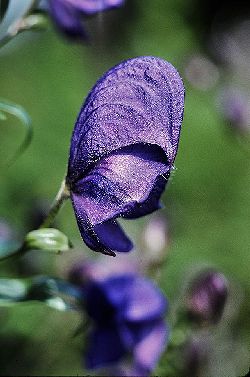 Don’t you mean nicotine?
Don’t you mean nicotine?No, although it is a poisonous plant extract just like nicotine, except without the addictive problems. Aconitine is extracted from the devil’s helmet or monkshood plant (photo, right), whose Latin name, Aconitum, provided the name for the drug.
Yes, in many countries it’s quite notorious as a poison. For example, in Iran it’s called Halahel, which is apparently also a insult used to describe a spiteful, venomous person. Toxins extracted from Aconitum plants were historically used to kill wolves, hence its the other name - Wolf's bane. This unfortunate name, plus the plant’s potency, probably led to Wolf’s bane being used by storytellers (e.g. Bram Stoker’s Dracula), TV scriptwriters (The Vampire Diaries, Grimm) and movie writers (Harry Potter, The Wolf Man (1941), Ginger Snaps), as a link to werewolves and vampires, either killing the fantasy creatures or helping them, depending on the plot requirements.
Despite its dubious links to fiction and fantasy, Aconitum is actually so toxic that poisoning may even occur if the leaves of the plant are picked without wearing gloves. This is because the toxin is absorbed easily through the skin. If this happens, tingling and then unpleasant numbness start at the point of absorption and then extend up the arm to the shoulder, and then on to affect the heart.
![Pope Clement 6th Clement VII. Sebastiano del Piombo. c.1531. by Sebastiano del Piombo - [1]. Licensed under Public domain via Wikimedia Commons - http://commons.wikimedia.org/wiki/File:Clement_VII._Sebastiano_del_Piombo._c.1531..jpg#mediaviewer/File:Clement_VII._Sebastiano_del_Piombo._c.1531..jpg](pope-clement-6.jpg) Because of this potency, in the 14th century Pope Clement VII (pictured left), worried about being assassinated (as his father had been), asked his physician Matthiolus to find an antidote to various poisons, including Aconitum. Using criminals that had been sentenced to death, Matthiolus divided the prisoners into two groups. He gave the poison to both, but the suspected antidote to only one group. He never found a true antidote, but after lots of unsuccessful tests he discovered that the best treatment was to administer oil and water. This emetic mixture would make the prisoners vomit out the poison, which would (sometimes) save them. Ironically, Pope Clement did eventually die of poisoning, but not assassination. In 1534 he accidentally ate a death-cap mushroom!
Because of this potency, in the 14th century Pope Clement VII (pictured left), worried about being assassinated (as his father had been), asked his physician Matthiolus to find an antidote to various poisons, including Aconitum. Using criminals that had been sentenced to death, Matthiolus divided the prisoners into two groups. He gave the poison to both, but the suspected antidote to only one group. He never found a true antidote, but after lots of unsuccessful tests he discovered that the best treatment was to administer oil and water. This emetic mixture would make the prisoners vomit out the poison, which would (sometimes) save them. Ironically, Pope Clement did eventually die of poisoning, but not assassination. In 1534 he accidentally ate a death-cap mushroom!
But like many poisons, in low doses it can treat various diseases. Aconitine has been known for centuries in China as a traditional herbal medicine that helps alleviate pain and fever. The problem is that the difference between dosages that help the patient and those that kill them are quite small – so it’s very easy for a lethal overdoes to be given, either accidentally, or on purpose.
Yes, in fact that’s what aconitine is most infamous for, as a poison of choice by many murderers, especially in the 1800-1900s. Before the advent of modern painkillers like aspirin and paracetamol (acetaminophen), a herbal medicine like aconitine was one of the few analgesics readily available in pharmacies. So many Victorian households might have a bottle of aconitine in the medicine cabinet, which made it easy to use - and abuse.
The LD50 (the dosage at which 50% of subjects die) has been reported as being only 30 μg per kg when eaten. That means a 60 kg person would need to ingest only 1.8 mg to die –about the same amount as 10 crystals of table sugar. Victims of aconite poisoning suffer severe vomiting, and often become paralysed. Their organs eventually stop working and they die from asphyxiation, but they remain conscious throughout. It’s a particularly slow and agonising death. It works by binding to a receptor in cells which control sodium channels which are vital for the functioning of many cells, including neurons. Aconitine effectively jams the channel open, so the neurons are constantly on, and cannot refresh themselves. Until they’re refreshed, no new signals can travel along the nerve cell, resulting in paralysis.
Yes, and there were some quite notorious cases over the years.
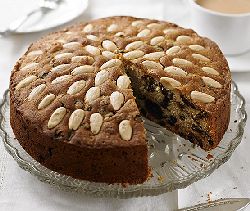 Such as?
Such as?George Henry Lamson was an American doctor who came to work in England in 1881. But he became addicted to morphine, and fell into financial debt. His one hope was if he could get hold of the inheritance due to him when his 18-year-old brother-in-law Percy John died. Even though John was paralysed down one side of his body, he was otherwise healthy and not likely to expire soon. So Lamson decided to poison him with aconitine, hidden inside a piece of Dundee cake. This poison was chosen because Lamson had been told during his medical training many years before that aconitine was undetectable. The plan nearly succeeded, and John died. But forensic science had moved on in the intervening years since medical school, and the Victorian ‘CSIs’ were now able to detect the poison in the remnants of the cake. Lamson went on trial at the Old Bailey, was found guilty, and hanged in 1882.
It was quite common to hide the aconitine in a drink, cake, or even a curry!
 A curry?
A curry?Yes, and the killer, Mrs Lakhvir Kaur Singh (photo, left), became known as the ‘Curry Killer’. The crime occurred in London in 2010, almost 130 years after the Lamson case. This was a murder of jealousy and revenge, after Singh’s lover, Lakhvinder Cheema, left her for another woman. Because aconitine was no longer commonly available in pharmacies, Singh had travelled to India specially to collect the poison, which showed a callous degree of premeditation. She put the poison into a curry in the victims’ refrigerator, and when Cheema and his new fiancée ate it the next day they both became seriously ill. During the call to the emergency services, Cheema alleged he’d been poisoned by his ex-girlfriend, but died within an hour. His new fiancée was treated and survived. Singh was found guilty of murder and grievous bodily harm at trial and was sentenced to 23 years in prison.
 Any more?
Any more?Yes, staying on the Indian theme, in 1857 during the Indian rebellion against British rule, some Indian regimental chefs tried to poison a British Army detachment by adding aconitine to their meal. Somehow the word of this attempted poisoning had reached the attention of the East India Company officer John Nicholson (picture, right), who confronted the chefs and demanded they prove their innocence by eating their own curry. When they refused, he force-fed the curry to a monkey, which died immediately. The story goes that Nicholson then strode into the British mess tent and said "I am sorry, gentlemen, to have kept you waiting for your dinner, but I have been hanging your cooks."
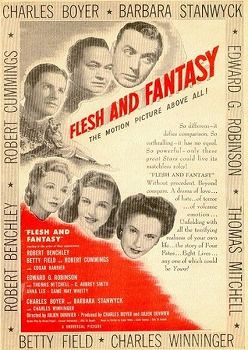 So it was nearly used as a weapon of war?
So it was nearly used as a weapon of war?Nearly. And in the 1950s the Soviets were researching into using aconitine as a poison weapon. It is rumoured that Soviet biochemist Grigory Mairanovsky used aconitine in experiments with prisoners in the secret NKVD laboratory in Moscow. In an interview with the Russian newspaper Novaya Gazeta in 2010 he admitted killing around 10 people using the poison.
That’s true, arsenic was used for murder very frequently during the Victorian times because it was both commonly available, and undetectable. Eventually, of course, forensic science established a way to detect arsenic, so aconitine then became the poison of choice…until it, too, became detectable. Nevertheless, there have been a number of occasions when aconitine has made it into the popular media. Oscar Wilde's 1891 story Lord Arthur Savile's Crime made aconitine famous when it was used by the main character in an (unsuccessful) attempt to kill his elderly Aunt Clementina. This story was later made into a 1943 film called Flesh and Fantasy. Also in James Joyce's Ulysses, the protagonist Leopold Bloom's father committed suicide using pastilles of aconitine. And recent TV series, such as Dexter, Midsomer Murders, the pilot episode of Forever and American Horror Story: Coven, have all featured poisonings with aconitine.
![]()
[Thanks to Masoud Sadeghi for suggesting aconitine as a MOTM]
![]()